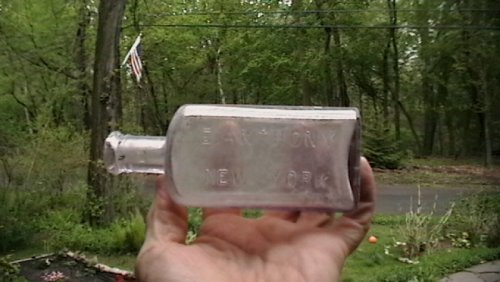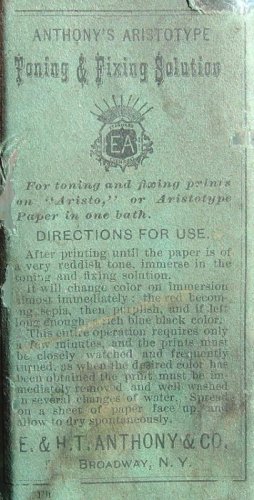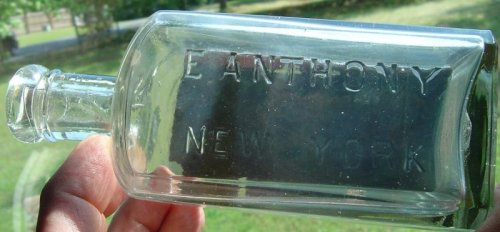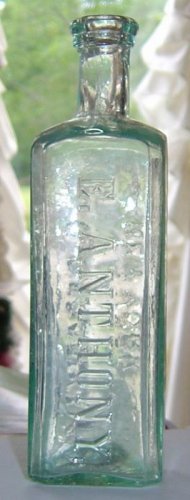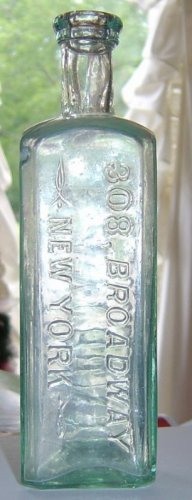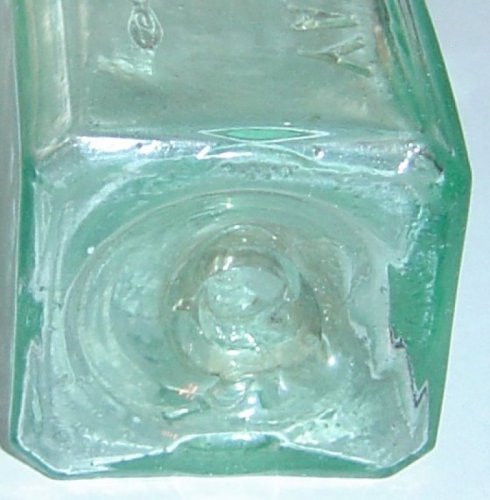All I could find was an E. Anthony from NYC with photographic background. Bottle is 6 1/4" high and 2 5/16" wide. 2 part press with blown neck? ( faint twist marks on neck indicate) seams stop at top of shoulder. Is that for sure an indicator for pre 1900?



